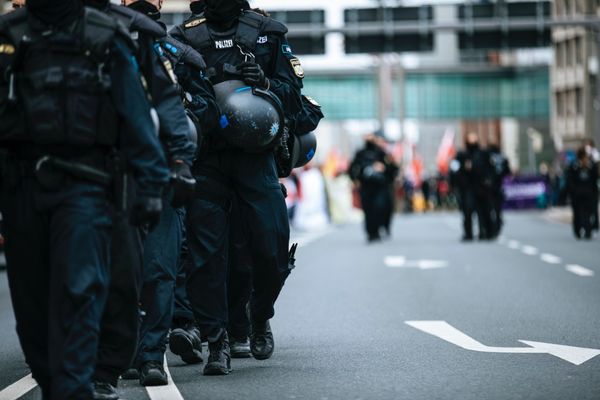
When torrential rain hit the Byron Bay hinterland in 2022, the ground began to slip away. While lower communities in the northern rivers faced one-in-1,000 year floods, in Upper Main Arm there were landslides big enough to bury a house.
Both destroyed the roads.
“There’s still patches in the road where locals are filling up the potholes with rocks because they’re so deep,” Upper Main Arm resident and Bundjalung woman Dr Bronwyn Bancroft said.
The floods damaged an estimated 13,000km of roads in regional New South Wales with a repair bill of more than $2bn, Transport for NSW said.
Bancroft, an artist, lives in the rainforest at Upper Main Arm. On the day the floods hit she was in her studio in Byron Bay. The damage to the roads was so extensive that she was unable to return home for four months, until a bridge that had been washed away was restored.
“These roads had gigantic amounts of soil moved and the road disappeared,” Bancroft said.
She said the work done by her local council to restore the roads, given the extent of the damage, “has been pretty amazing”. But many remain hazardous. Her daughter recently damaged her car in a deep pothole near Lismore. On local Facebook pages, complaints of “undriveable” roads are common. In the worst-affected shires, local governments are struggling to keep up.
A report by the NRMA, released in December 2022, said NSW councils already faced a $1.9bn funding backlog to bring council-owned roads up to a safe standard before the 2022 floods hit. Transport for NSW told Guardian Australia it would cost “between $2bn and $3bn” to conduct “disaster reconstruction work” on local and regional roads.
Some of that funding is being provided through state and federal grants to councils where a natural disaster has been declared.

A spokesperson for Transport for NSW said that will help ensure “the roads used by regional communities daily are efficient, safe, and reliable so people can travel around town, go to work, visit their family and friends, and keep our supply chains moving”.
But that additional funding does not cover works to improve roads that were damaged before the floods.
Claire Ede lives in Bundella, a small community about 300km north-west of Newcastle. The dirt road she drives to take her children to school was washed out in the 2022 floods. Small repairs have made the road drivable but she said it remained in a poor condition.
“There’s potholes, there’s corrugation, you’re basically down to first gear, rolling through sections of that road because it’s that bad to cross,” she said.
“You’re using extra fuel … all the wear and tear on your tyres, worrying about flat tyres. It’s been stressful. It’s still stressful.”
The alternative route to school, avoiding the damaged road, would double the 40-minute trip to about 80 minutes. Driving to the hospital also means bumping slowly along the uneven gravel.
“What happens if we need an ambulance in the middle of the night and they couldn’t come the quickest way?” Ede said.
Even before the floods, Ede said, the road was in poor condition. “Three years ago it took the ambulance two hours to get to us,” she said.
Some of the funding programs prioritise emergency repair work, often carried out immediately after a natural disaster. Transport for NSW said there’s “no ceiling on the amount of funding that can be provided” so there is “no reason for councils to use ‘Band-Aid’ solutions”. But after a natural disaster, repairs are not always extensive.
Local Government NSW said councils should receive enough funding to ensure post-disaster repairs improve on what was there before.
“It makes no sense restoring roads and bridges to pre-disaster standards when they will be damaged or destroyed by the next natural disaster. It is a false economy,” a spokesperson said.







